Given Riga’s considerable charms, visitors may be reluctant to leave the Latvian capital for even a short time. But a day trip to a nearby town or national park can provide an even richer picture of life in this Baltic nation. Thanks to Latvia’s compact size, most places within its borders can be seen in a day if you have your own wheels. For the purposes of this post, I’m sticking with destinations reachable via public transport. Latvia’s bus and train connections are extremely affordable, and the English websites fairly easy to use so long as you know the station names. (AO is short for “autoosta,” Latvian for “bus station”.) It’s worth researching both options to find the time and route that best fits your schedule, though I note my preferred way to reach each spot in the descriptions below. Without further ado, I give you my 10 favorite Riga day trips!
Sigulda
Whether you’re a winter sports enthusiast or an avid hiker, an adrenaline junkie or a medieval history nerd, Sigulda has you covered. Situated in picturesque Gauja National Park, Sigulda boasts some of the steepest hills that remarkably flat Latvia has to offer. As such, it’s one of the country’s premier winter sports destinations. Here you can find downhill skiing and snowboarding, cross-country skiing, and a professional-grade bobsleigh and luge track that operates year round.
For those craving less strenuous pursuits, Sigulda is home to some fascinating medieval castle ruins and museums. To make the most of your time at the spectacular Turaida Museum Reserve, catch mini bus 3112 from Sigulda station. The bus services the 5km circuit between Sigulda, Turaida, and Krimulda Manor and costs €0.50 each way. October is arguably the best time to visit Sigulda, when the colorful foliage is at its peak. A cable car across the Gauja river provides expansive views of the pristine forest and easy access to Krimulda Manor. You can pick up free maps at the Tourist Information Center located inside the train station. (Click here for my full weekend guide to Sigulda.) Riga to Sigulda: 1 hr 15 min via train.
Jelgava
Despite nearly being wiped off the map during WWII, Latvia’s fourth-largest city has much to recommend it. Begin your day at the Holy Trinity Church (a 15-minute walk from the station). The lone surviving tower offers sweeping city views from a glassed-in observation deck. Look for Jelgava Palace on the horizon, a crumbling pink relic of the Duchy of Courland that now serves as the Latvian University of Agriculture. Don’t miss the 40-strong herd of wild horses that graze in the meadows behind the palace!
Another pretty-in-pink structure is Academia Petrina. Originally the first university in Latvia, the striking building now houses the Jelgava History and Art Museum, a must for anyone who wants to better understand the city’s heart wrenching history. In August, Jelgava hosts the annual Milk, Bread, and Honey Festival showcasing – you guessed it – locally-made milk, bread, and honey. (Discover more about Jelgava in this post.) Riga to Jelgava: 49 minutes via train.
Rundale Palace
To get a taste of Latvia’s lost 18th century grandeur, head to Rundale Palace. Fondly referred to as “the Versailles of Latvia,” the summer home of the erstwhile Dukes of Courland has been painstakingly restored and lavishly refurnished with antiques. Guided tours are available, though visitors are free to wander through the sumptuous rooms on their own. Pay special attention to the intricate stucco work and blue-and-white porcelain stoves – three of which are original! Rundale is lovely year round, though it shines brightest during the summer months when the gardens are in bloom. (To see photos from inside the palace, click here.) Riga to Rundale Palace (via Bauska): 1 hr 30 min via bus, plus wait time between buses.
Since you’ll need to pass through the town of Bauska to get to Rundale Palace, you might as well stop and explore a bit. From the bus station, it’s a 15 minute walk to the Tourist Information Center in Town Hall Square. Here you’ll also find the Bauska History and Art Museum and Tornis Taverna, a great option for lunch. The surrounding streets are lined with heritage wooden architecture, and the town’s old white church is worth a gander.
If time permits, continue another 20 minutes or so on foot to Bauska Castle. Perched on a hill between two forks of the Lielupe River, the crumbling Livonian castle ruins offer a terrific vantage point for admiring the quaint little town. A restored 16th-century manor house abuts the castle and serves as a somewhat sparse museum, though it’s worth the price of admission to admire the colorful tiled floors! Riga to Bauska: 1 hr 15 min via bus.
Tukums
In the 13th century, the Livonian town of Tukums gained significance as a stop on the trade route to Prussia. After the Livonian Order gave way to the Duchy of Courland, trade routes expanded and industry in Tukums boomed. All that remains of the Livonian’s once-great castle is a solitary tower, now the Tukums Museum. The charming old town has retained its original layout, with the market square at its center. The surrounding cobbled streets are lined with historic storefronts, art galleries and churches. Riga to Tukums: 1 hr 20 min via bus or train. If you take the train, be sure to get off at the Tukums 1 stop, which is much closer to the old town than Tukums 2.
A half-hour walk from Tukums 1 Station away from the old town will lead to Durbes Pils, a restored 17th century manor house. The grand estate was owned by various Baltic German nobles before being bestowed upon famous Latvian poet and playwright, Rainis. During the Soviet era, Durbe Manor was used as a sanatorium; it was taken over by the Tukums Museum in 1991. Today, the ground floor recreates the scene of 19th century aristocratic life, while the first floor exhibits focus on the works of Rainis.
Kemeri National Park
On the Baltic coast not far from Tukums sits the vast expanse of Kemeri National Park. The huge territory is covered by forests, lakes, and wetlands that are home to a wide array of birds and mammals. One of the best ways to experience this special ecosystem is the Great Kemeri Bog Boardwalk. Raised wooden trails loop around the peat marsh, making it easy to traverse the challenging terrain. Be sure to climb the wooden tower at the boardwalk’s halfway point for a birds-eye view of the unusual landscape. Riga to Kemeri: 1 hour via train. Note that it’s a three kilometer walk from the train station to the raised bog, but bicycle rentals are available.
Dobele
This tiny town traces its roots to the Middle Ages when the Livonian Order ruled the land. Dobele Castle, the knights’ sprawling command center, was left in ruins after centuries of war. But what splendid ruins! I thought they were some of the most impressive Latvia has to offer thanks to their unrestored appearance. The old town square is a short 10-minute walk from Dobele Castle and is noteworthy for its historic Lutheran church and large well-shaped fountain.
Believe it or not, Dobele is also home to the largest lilac garden in Europe. In the 1950s, Peter Upitis began cultivating lilacs and today his namesake garden boasts over 200 lilac trees. The annual Dobele Lilac Festival, which takes place in late May when the garden is in full bloom, is not to be missed! (Check out this guide to Dobele for more information on the town and garden.) Riga to Dobele: 1 hr 30 min via bus.
Talsi
To experience an idyllic slice of small-town Latvian life, head to Talsi. I was completely enchanted by its cobbled streets, historic architecture, friendly locals, and peaceful lake-side setting. A well-tended wooden boardwalk circles the lake, making it an excellent place for a walk. Talsi’s main attractions are the District Museum and Creative Yard, a work and exhibition space for local artists. Dining options abound, though I strongly suggest having lunch at Martinelli’s Restaurant and an afternoon snack at Piena Seta, a bakery next to the dairy factory. Wheels of Talsi cheese make an excellent souvenir! (My complete Talsi guide is here.) Riga to Talsi: 2 hr 10 min via bus.
Salaspils
Latvia’s National Botanic Garden boasts the largest collection of plants, flowers, and trees in the Baltics. What began as a small nursery in the 1800s has grown to include some 14,000 species from around the world. The Garden is spread over 129 hectares and open year round. I visited in spring when the tulips and snowdrops were in bloom. A highlight is the gleaming new greenhouse stocked full with cacti and diverse tropical flora. The main entrance to the Botanic Garden is directly adjacent to the train station, and the ticket office doubles as the town’s tourist information center. In summer you can rent bicycles to help you reach the other points of interest in Salaspils. (My friend and I hired a taxi for a few hours for around €20.) These include the riverside ruins of St. George’s Church and a Monument to Soviet Prisoners of War. Riga to Salaspils: 25 minutes by train.
The Salaspils Memorial stands in stark contrast to the natural beauty of the Botanic Garden a mere five kilometers away. In 1941, the Nazis established a work and prison camp in Salaspils, which was located on the main train line between Daugavpils and Riga. Between 1942 and 1944, thousands of prisoners passed through the camp, many on their way to larger camps in Poland and Germany. Those who were incarcerated at Salaspils were forced to work in dismal conditions. Many died of starvation and disease, while others were executed. Sadder still is the knowledge that young children were among the many victims: a mass grave on the site has been found to contain the remains of over 600 children. Stand quietly on the camp’s concrete foundations to hear the steady heartbeat of a metronome, a constant reminder of the lives lost. Soviet authorities established the Salaspils Memorial in 1967. The site is difficult to reach without a vehicle, but I’m including it because of its historical and cultural importance.
Ogre
That’s right, there’s a town in Latvia named after a hideous people-eating monster! Or is there? According to local legend, Empress Catherine the Great, who was born in the region, named the river угри or ugri, after the eels which once swam its depths. Whatever the reason for the unusual moniker, I knew I had to see this place for myself.
Ogre is a popular place to live thanks to its easy striking distance of Riga, and is actually one of the few towns in Latvia with an increasing population. The town itself is adorable, though admittedly low on attractions. The map I picked up at the tourist office proudly pointed out each of the heritage buildings lining the main street. There’s also a small history museum and a smattering of cafes. But mostly, people come to Ogre for the nature. A walking path follows the gently meandering Ogre River, which is spanned by the longest arched bridge in Latvia. I had hoped to visit the much lauded Zilie Kalni – or Blue Hills – Nature Park, but the walking distance from town was too great, even for me. Riga to Ogre: 40 minutes via train.
Jurmala
Last but not least is Jurmala, the famous resort town on the Baltic Sea. Located a mere 25 kilometers from the capital, it’s easy to see why this is the most popular of the Riga day trips. What’s surprising is the lack of development. The pristine white sand coast is backed by seemingly endless pine forests, with only a handful of hotels visible on the horizon. Mostly you’ll find secluded holiday homes and quaint townships tucked among the trees. A pedestrian promenade lined with shops and cafes connects the two most popular areas, Dzintari and Majori, known for their blue flag beaches. Visiting in winter? Go cross-country skiing over the frozen sand! (Click here for my guide to Jurmala.) Riga to Jurmala: 30 minutes by train. You can disembark at either Dzintari or Majori, though the latter has a nicer station area.
Which of these Riga day trips are you most interested in taking?
Have any others to add to the list?
PIN IT!
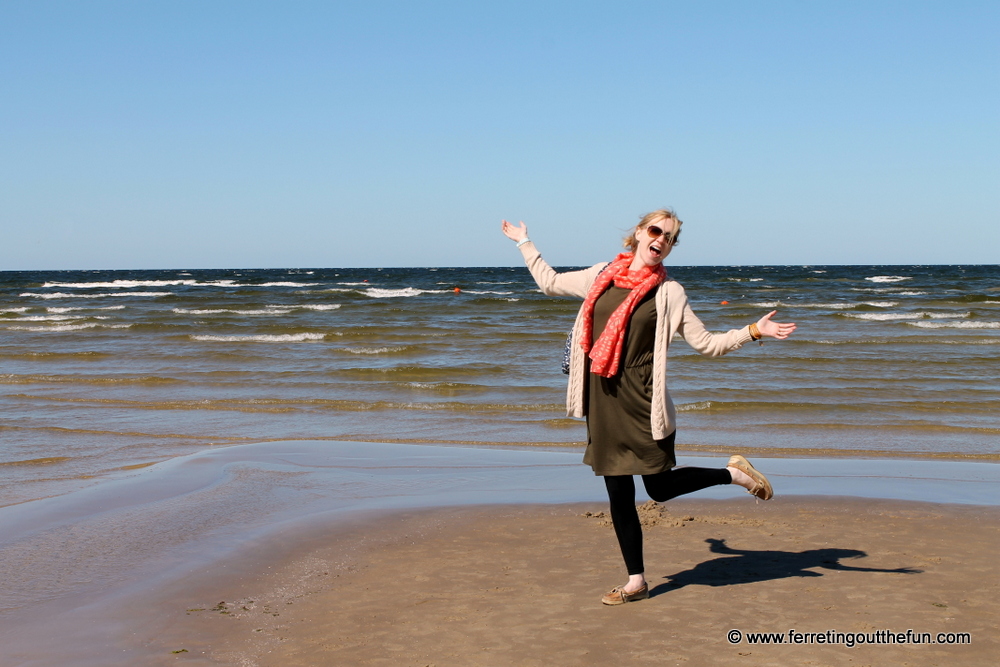
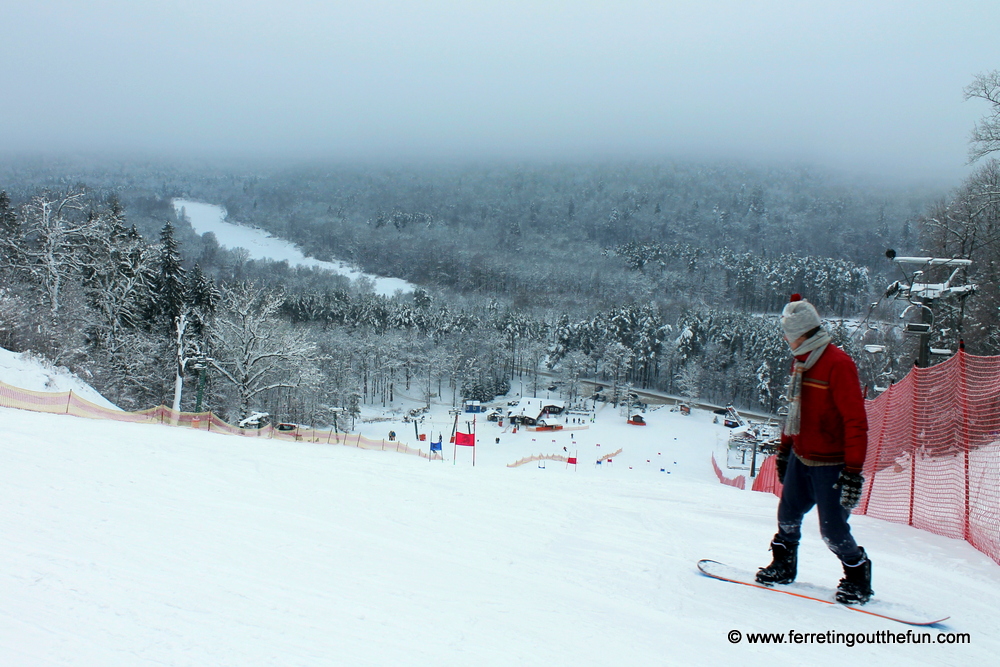

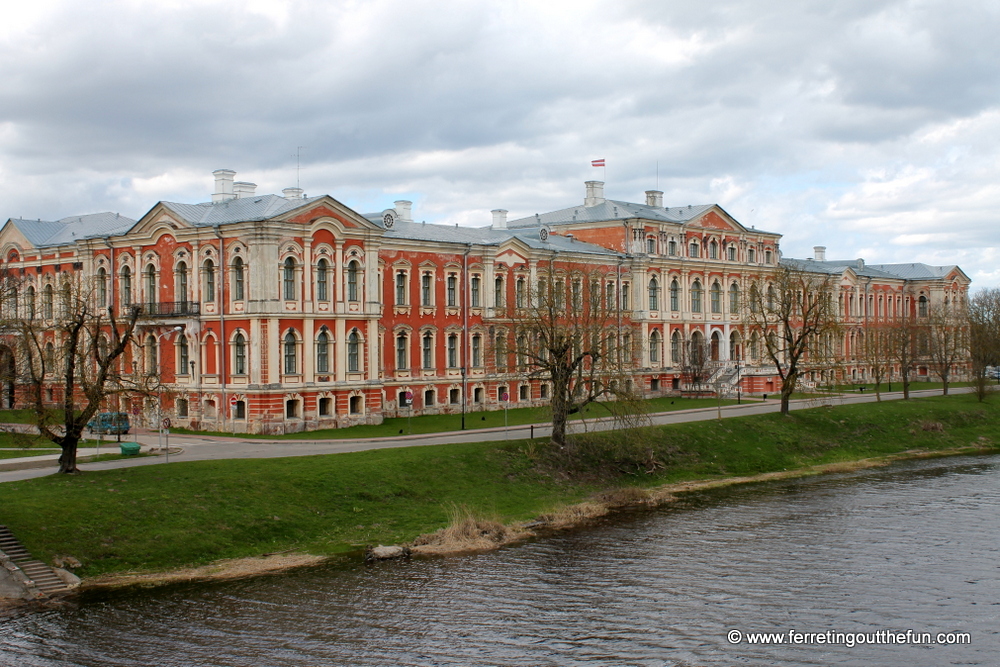
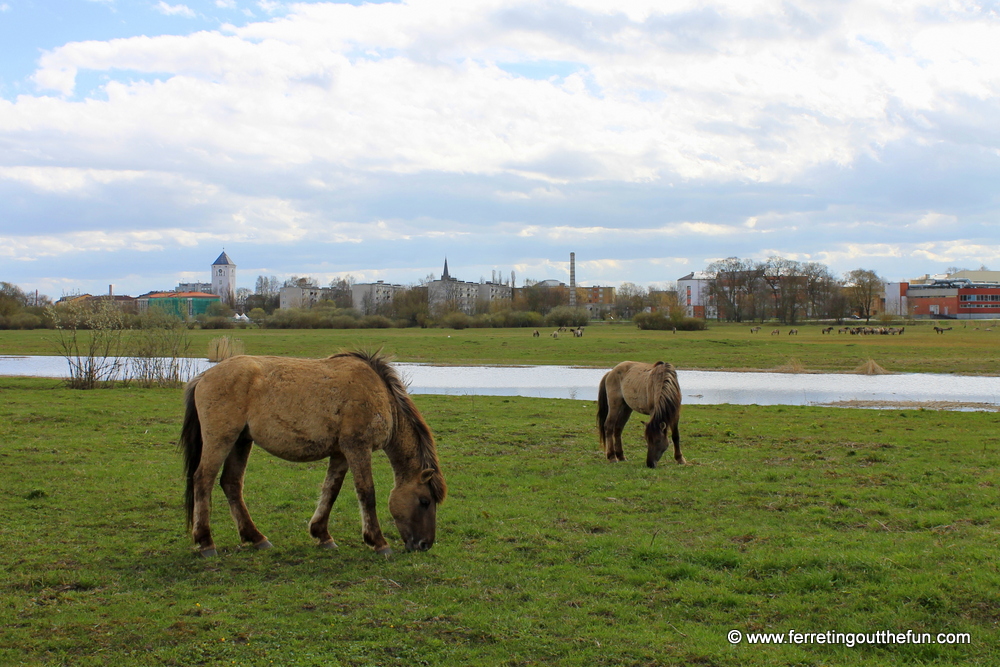
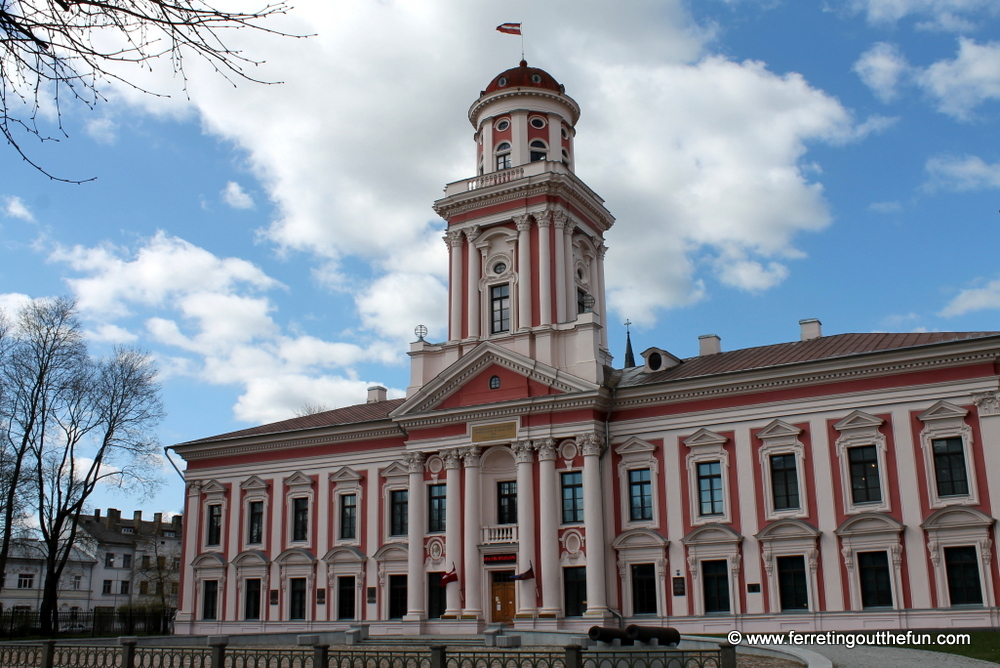

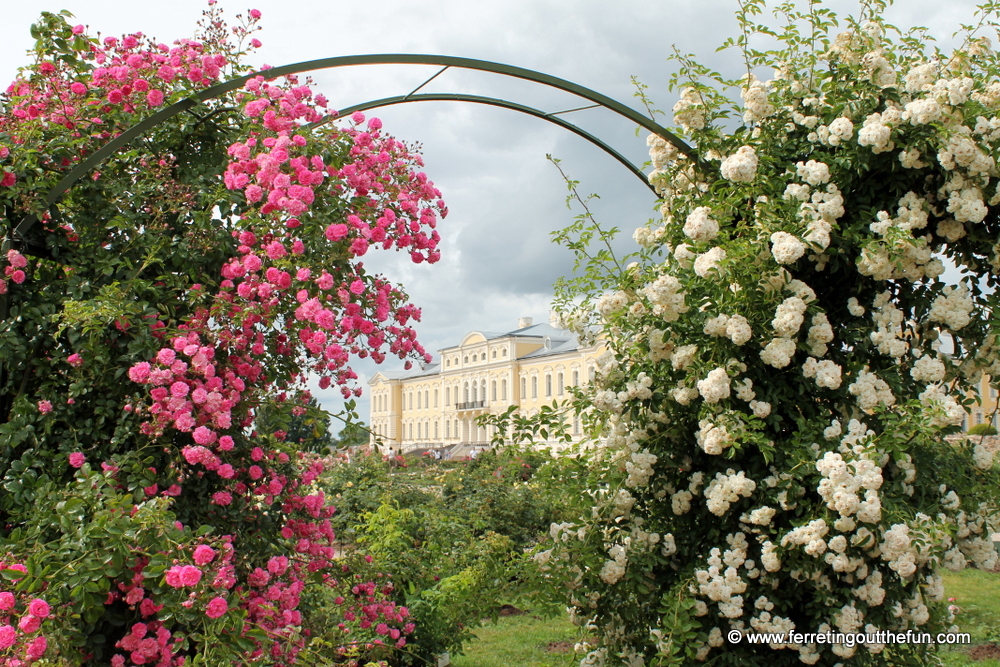





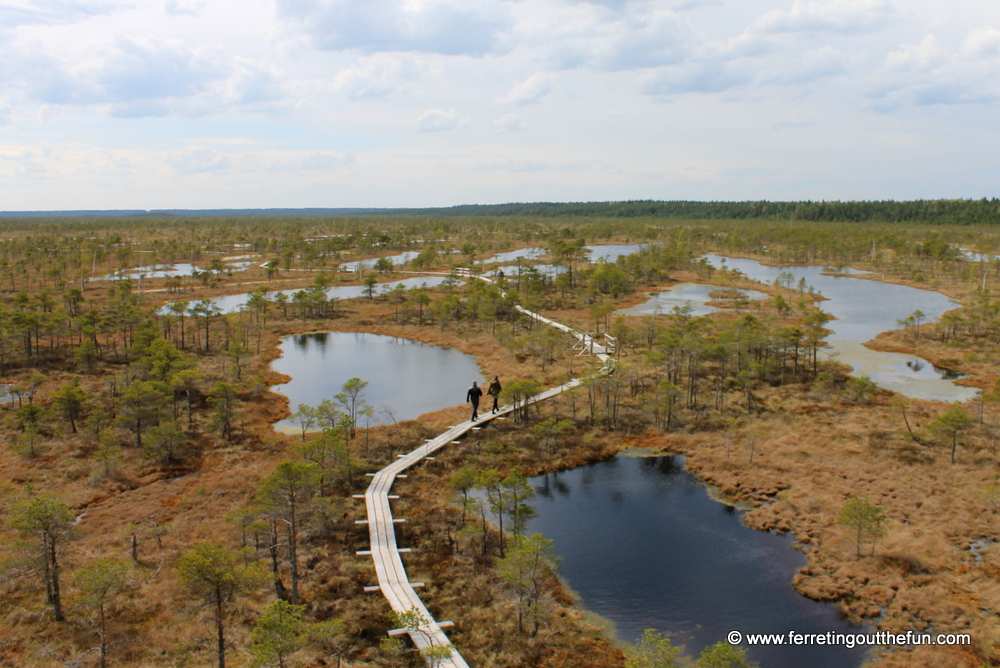
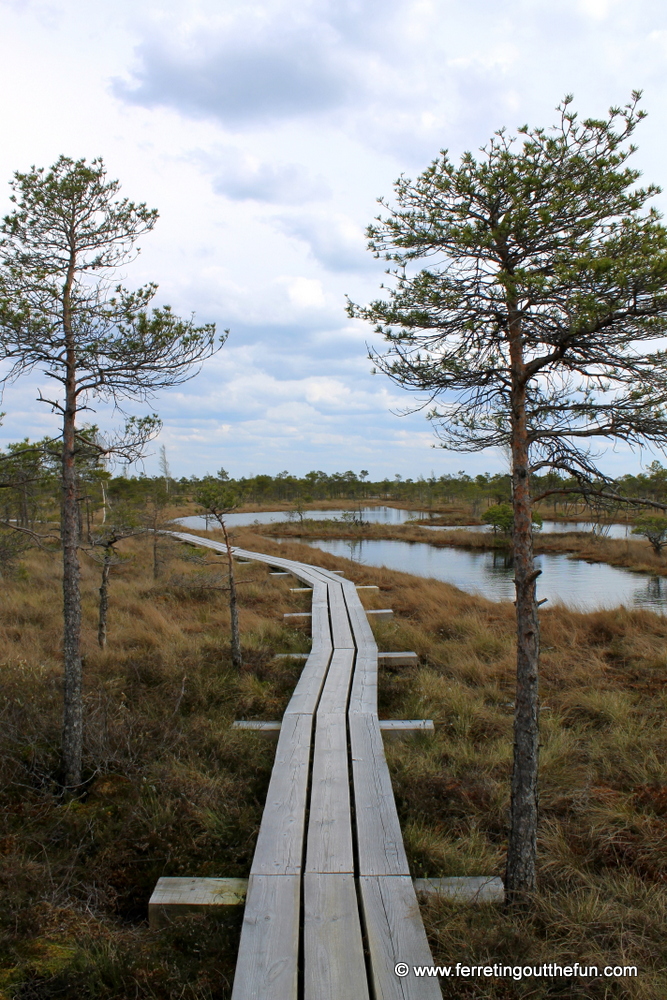
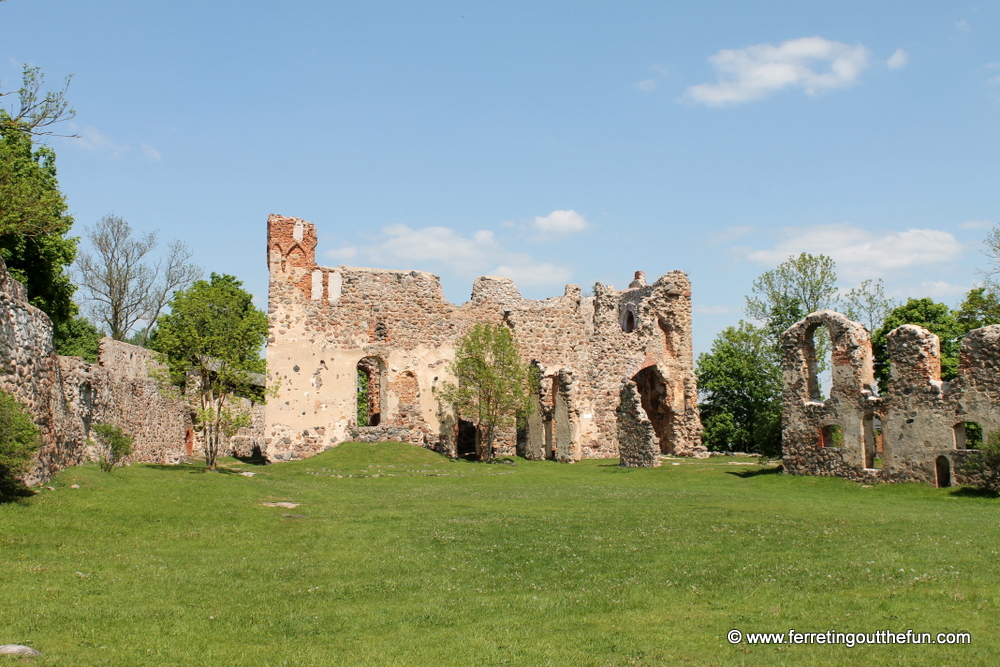
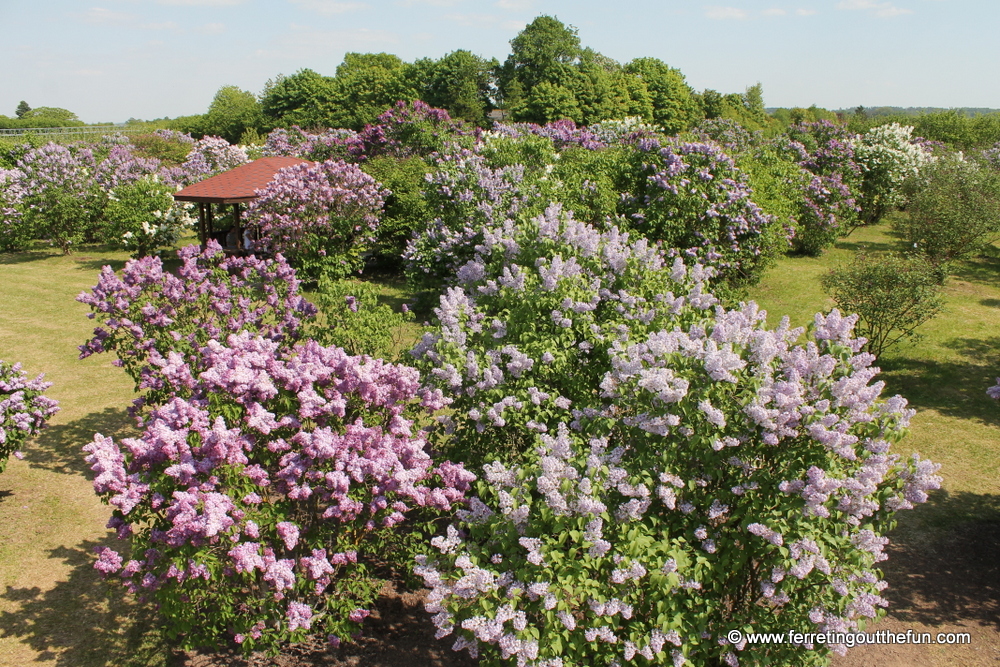
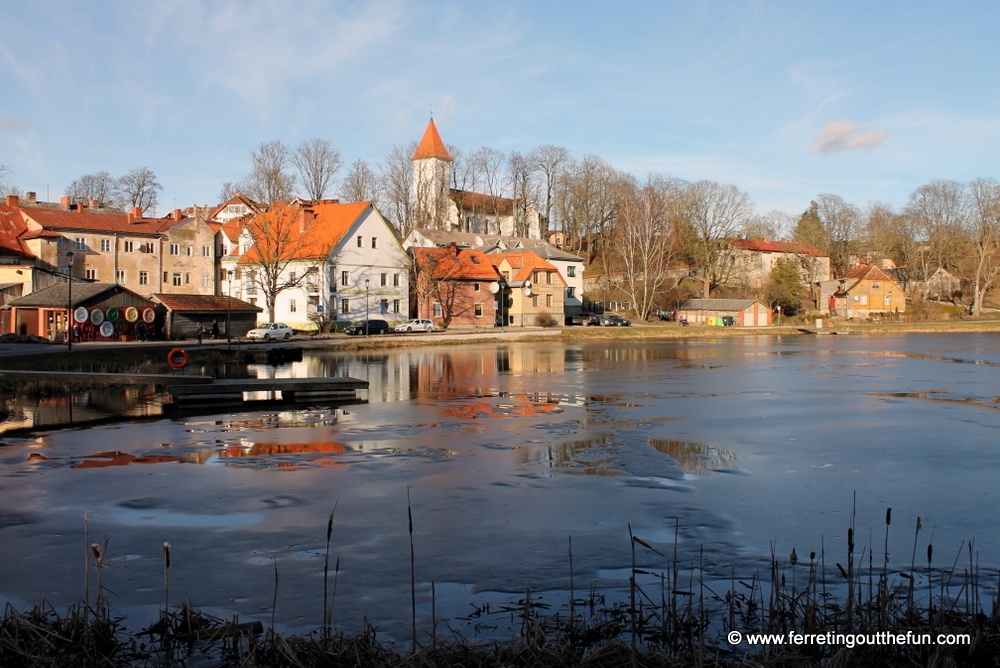

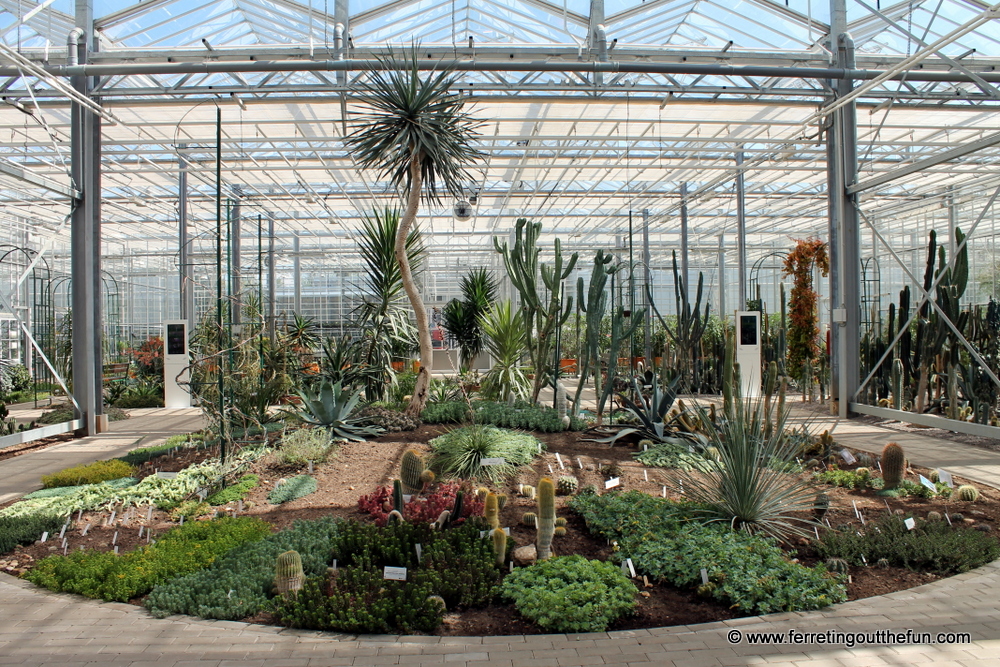
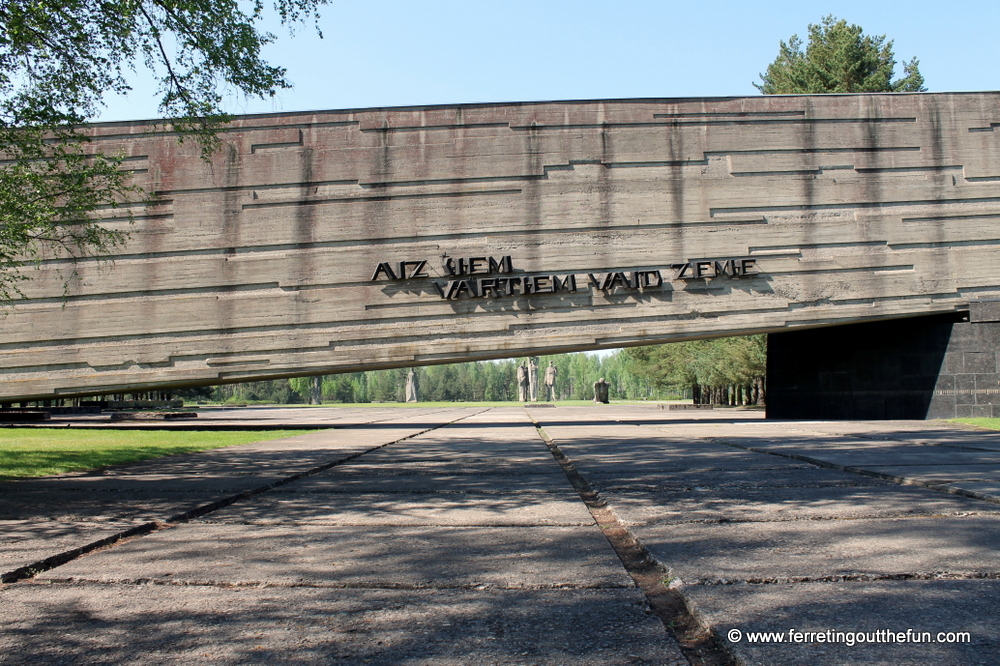

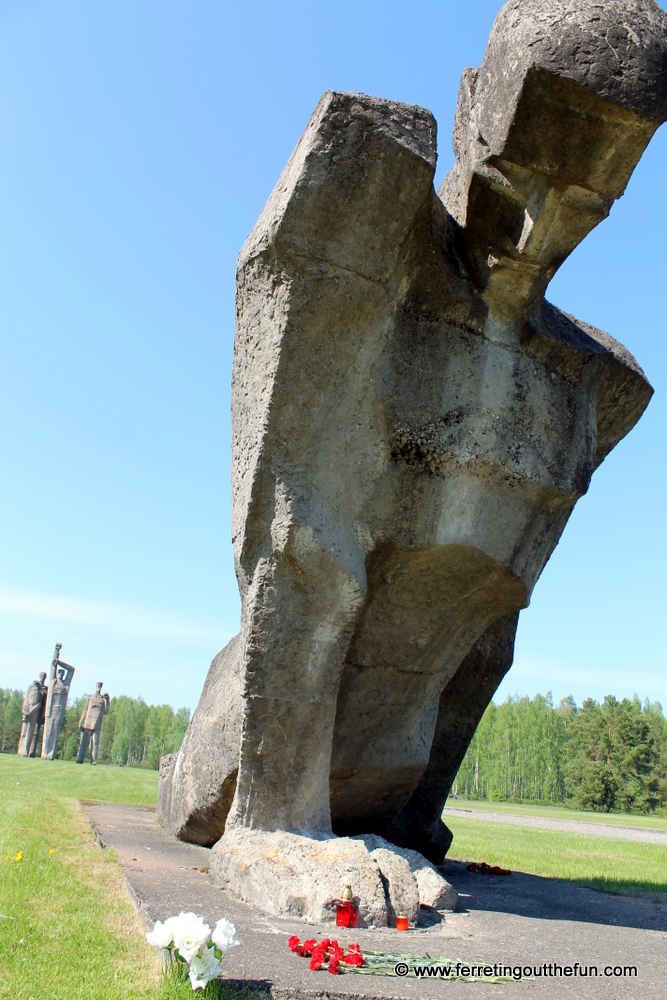

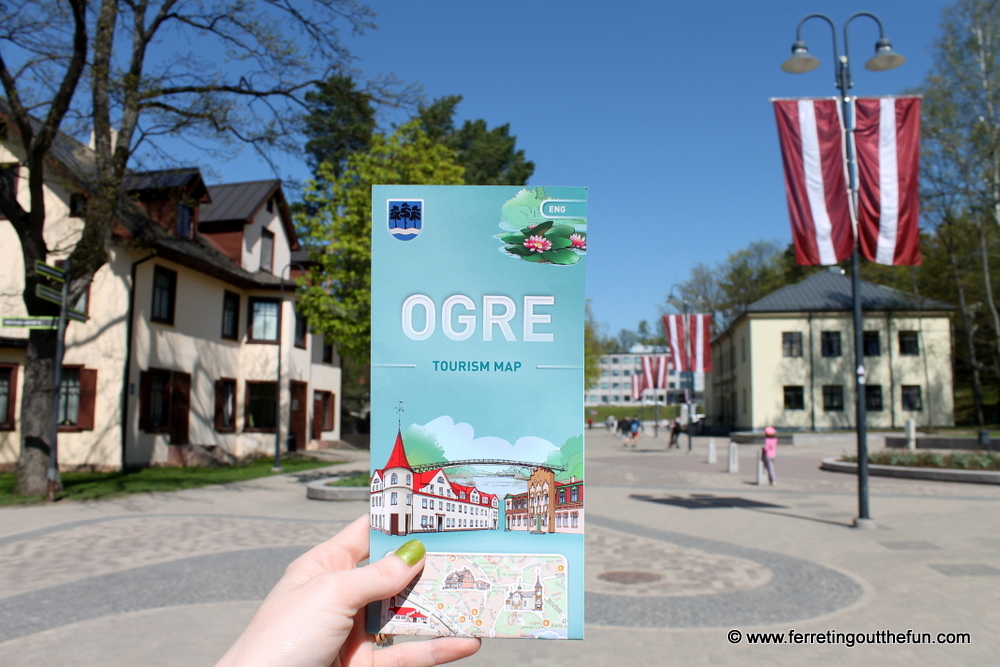



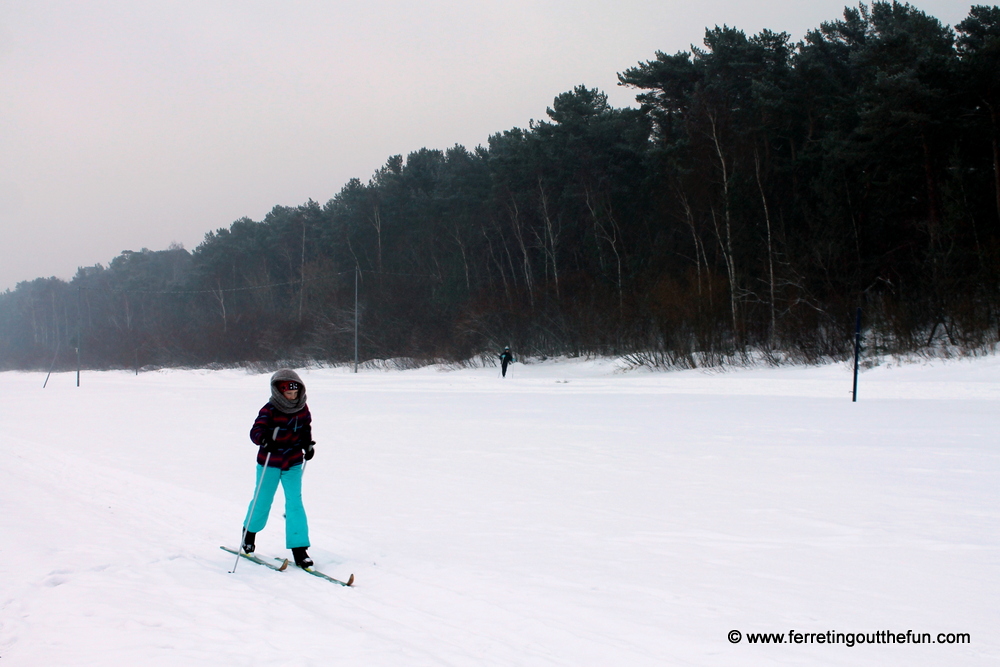
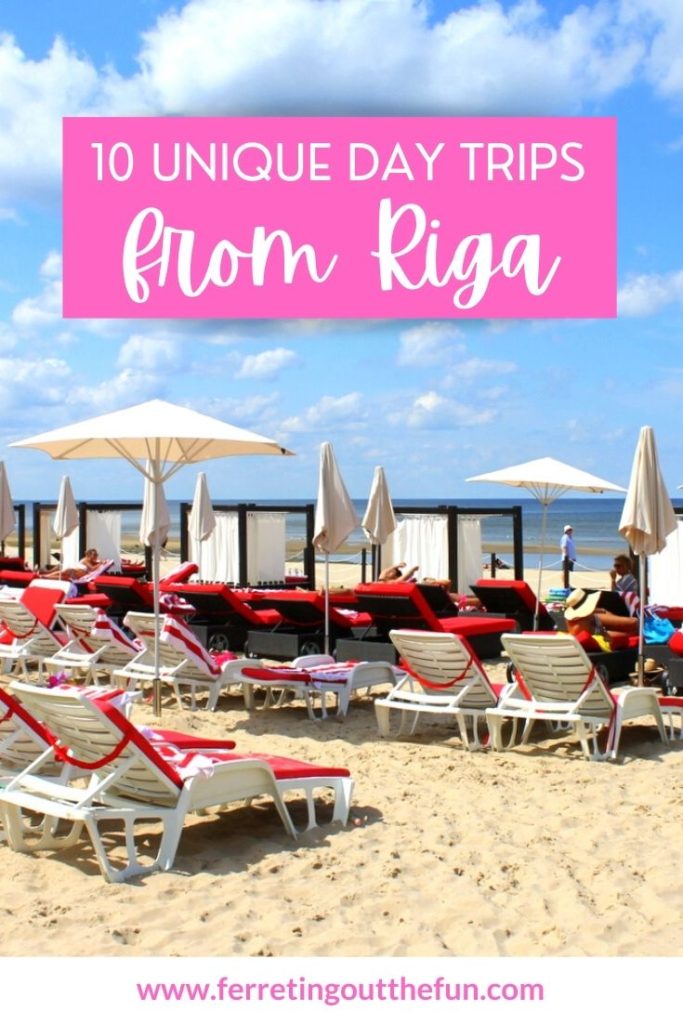
Great list! I personally loved Kuldiga and Cesis, and am hoping to make it to Skrunda when I go back next May. Maybe with an afternoon in Jurmala, though! Jelgava looks pretty tempting as welll!
Thanks, Nick! Kuldiga and Cesis are two of my favorite spots as well, and both are so charming that I think they warrant more than just a day. (It also takes quite a long time to reach them on the bus so you might as well stay over.) Plus, watching the sunrise over the Kuldiga waterfall is a special treat 🙂
A friend wanted me to go to Skrunda with her in the spring before I left Latvia, but I ran out of time. Let me know if you make it there!
Great blog. Love the pictures. Rundale castle was my favorite place that you took me too. It is just a breathtaking beautiful place. The roses were in bloom and so lovely. Jurmala is very pretty, but was cold when we were there. Couldn’t get over the frozen water around the beach. I did like Bauska and the castle. Glad we had our umbrellas!! Would love to go back to Latvia. Beautiful country.
We have so far only been to Riga and Sigulda in Latvia. Would really love to see the other places on your list one day. Luckily Latvia is not to far away from Sweden. 🙂
You’re lucky you live in the neighborhood, so to speak. I spent two years in Riga and still never got to all the places in Latvia that sounded interesting. Such a fascinating part of the world!
Great to see Latvia outside Riga … might include this country in my upcoming European tour … great photos!
Yes, you should! Latvia is an amazing place!
Great post. I think I underestimate Latvia. There is a lot to see
Latvia might be small in size, but it more than makes up for it in other ways! 🙂
I will admit to having never read anything about Latvia:( Thanks for the great post though! It has been added to my list, your mission is complete! 🙂
Very happy to hear! Latvia should be on everyone’s list 🙂
I would appreciate your correction regarding Salaspils Memorial. It wasn’t a work camp at all. It was a concentration camp, just like Auschwitz-Birkenau. Not on the same scale, but just like it. With a gas chamber and crematory. It was used for exterminating Baltic Jews and Roma. No need for changing history. It is what it is
Salaspils was offially Polizeigefängnis und Arbeitserziehungslager, not Konzentrationslager. People still died there, but not at the numbers Soviets have provided and not due to mass executions likem those in Auschwitz-Birkenau. Sorry, but I trust modern Latvian (and international) historians more than Soviet made-up stuff. Although it doesn’t make any difference as people were still killed there and common term for all such kinds of nazi camps is indeed ”concentration camp”.
Great post! Love all the inspiration and super helpful practical information.
Thanks, Sarah! I hope you enjoy a trip to Latvia very soon!